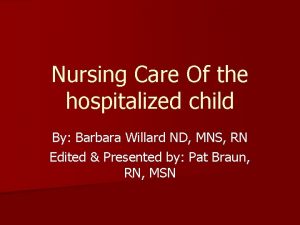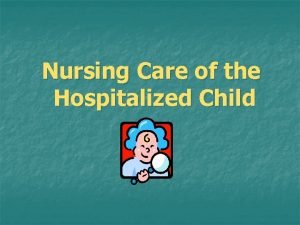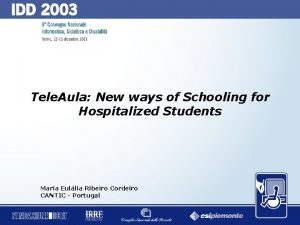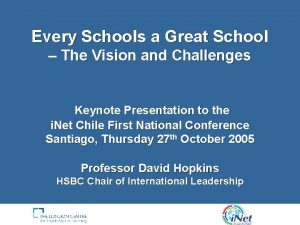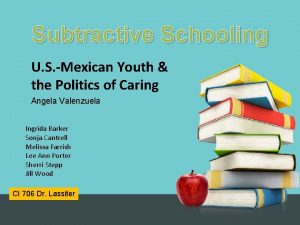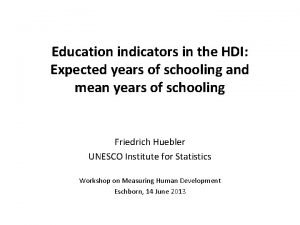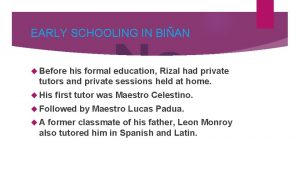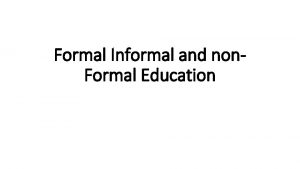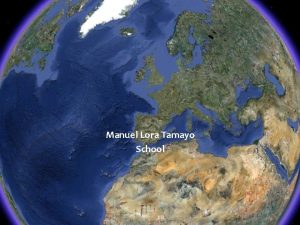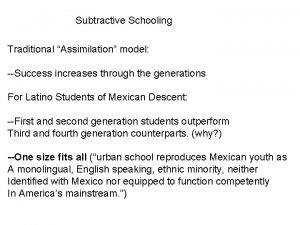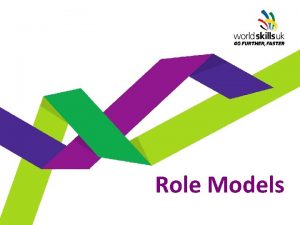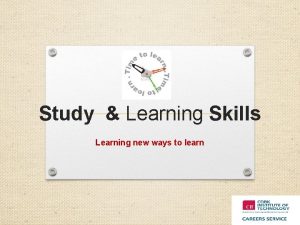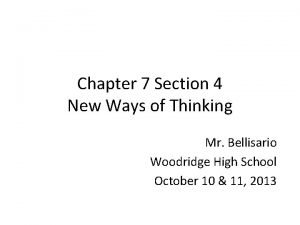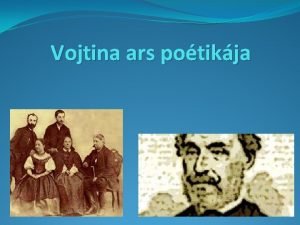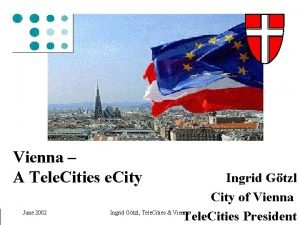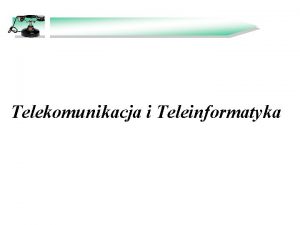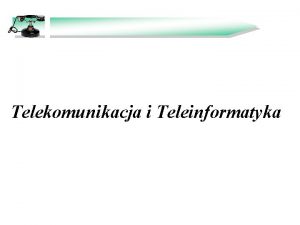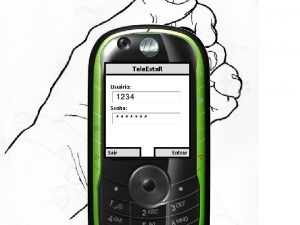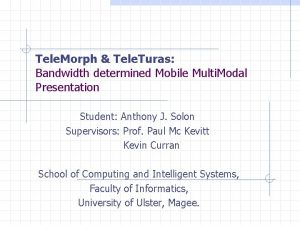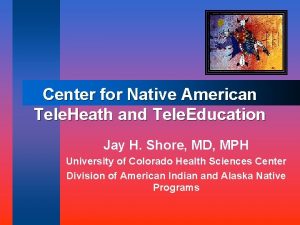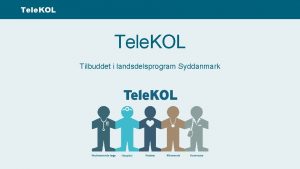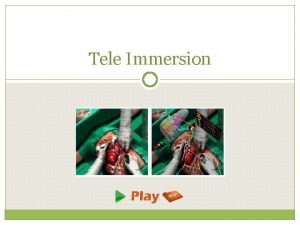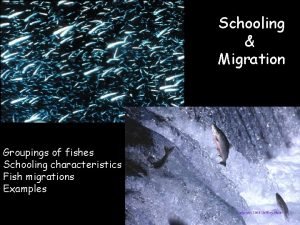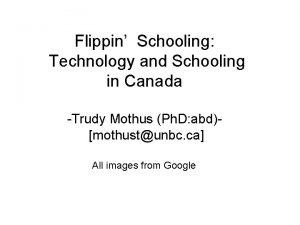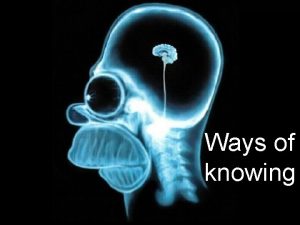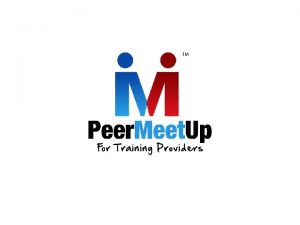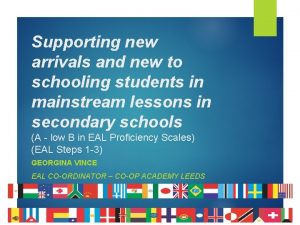Tele Aula New ways of Schooling for Hospitalized

















- Slides: 17

Tele. Aula: New ways of Schooling for Hospitalized Students Maria Eulália Ribeiro Cordeiro CANTIC - Portugal 0

Centro de Avaliação em Novas Tecnologias de Informação e Comunicação (Centre of Assessment in Information and Communication Technology) 1

Is a resources centre 2

GEOGRAPHICAL AREA The Lisbon Regional Education Directorate 3

Our Universe • Students with sever motor disability • Students with sever chronic diseases (kindergarten - university / working life) 4

Global AIMS of CANTIC • Enable students with severe motor disabilities or with severe diseases to succeed in regular schools Evaluation of students motor capabilities to identify the most adequate technological aids • • Support the work of teachers • Adapt technical aids to the needs of this students 5

Tele. Aula Our Approach • To link the students that are hospitalised with a regular school in the hospital geographical area (reference schools) • To link the students at home to his own school classes (original schools) 6

Tele. Aula Student with S. E. N. The disease becomes the centre of his life and interrupts his life projects They have a lonely life and are not integrated in society 7

Tele. Aula Advantages of Inclusive Schooling Access to the National curriculum Enables interaction with group of colleagues 8

Tele. Aula Telemultimedia Systems • Enable interactivity even at a distance • Enable different communications ways: – Audio – Video – Sharing documents – Transfer information (text, image…. etc) • Motivator of students and teachers 9

Tele. Aula Hospitals ― 1 paediatric ― 1 oncologic ― 2 general ― 1 rehabilitation Schools Home ― 9 reference schools 14 ― 14 original schools School level 4 th y – 2 5 th y – 2 7 th y – 1 9 th y – 2 11 th y – 4 12 th y – 3 1998 - 2003 10

Tele. Aula Home Students -Cardiopathology 2 -Muscular Dystrophy 2 -Leukaemia 4 -Sherman disease (rheumatism) 1 -Imperfect Ostheogenesis 1 -Vertebromedular trauma 2 -Cröhn disease 1 -Dermatitis 1 Pathologies 11

Tele. Aula Technologies of Distance Communication • 1 PC (Pentium III…)+ 1 printer • 1 videoconference card (Picture. Tel 550 or Videomeeting PC) • 1 ISDN access • 1 camera (webcam type) 12

Tele. Aula Adapted Methodologies èModel centered in the dynamics of school Reference School èModel centered in the classes activities 13

Tele. Aula Adapted Methodologies èModel centered in the classes activities Original School 14

Tele. Aula Project Results • Improvement of success at school and in the use of technology • Improvement of socialization, with positive impacts in the family Limiting Factors • Improvement of the tecnical resourses (elimination the bugs) • Very expensive technologies and communication • Low knowledge of some teachers in the use of technical resources 15

16
 Nursing care of hospitalized child
Nursing care of hospitalized child Nursing care of hospitalized child
Nursing care of hospitalized child Tele aula
Tele aula Romans 3:10
Romans 3:10 Oecd scenarios for the future of schooling
Oecd scenarios for the future of schooling Subtractive schooling definition
Subtractive schooling definition Expected years of schooling
Expected years of schooling Where did rizal started his formal schooling
Where did rizal started his formal schooling Merits of formal education
Merits of formal education Schooling active monkeys
Schooling active monkeys E schooling salesianas
E schooling salesianas Wage schooling locus
Wage schooling locus Italy school system
Italy school system Subtractive schooling
Subtractive schooling Role models danny boy
Role models danny boy New ways to learn
New ways to learn Chapter 7 section 4 new ways of thinking
Chapter 7 section 4 new ways of thinking New ways of doing business
New ways of doing business
